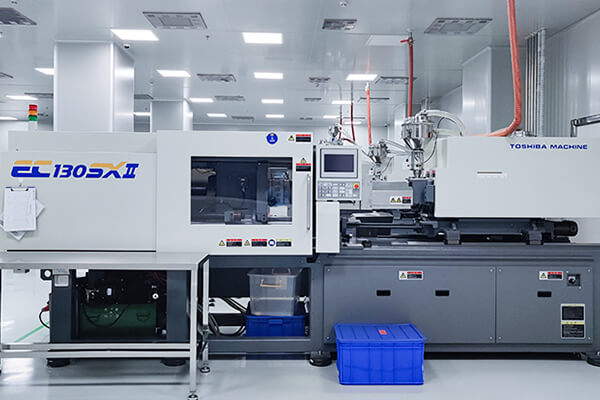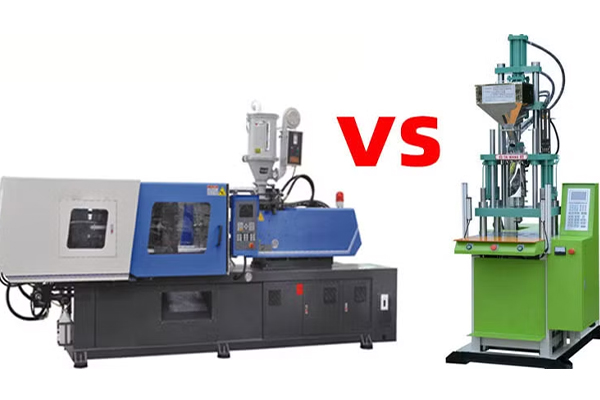Injection Molding Press: Help to Custom Molded Parts
Injection molding press is a kind of machinery used in injection molding process for producing custom molded parts. The injection molding machines we use come in many brands and models and vary in size, but they are all used to serve our product development and batch production.
At Sungplastic, you can find the injection molding services you need, and we will provide the most suitable injection molding machine to produce your project products, whether you need to produce small parts, large parts or precision parts.
Below are more details about injection molding and injection molding press.

What is an Injection Molding Press?
An injection molding press, also referred to as an injection molding machine, is a fundamental piece of equipment utilized in the manufacturing process of plastic parts through the injection molding technique. This molding press is renowned for their remarkable efficiency, capable of producing a multitude of parts from a single mold. Injection molding stands as the most prevalent method employed for crafting plastic injection-molded products across various industries.
History of Injection Molding Press
The origins of injection molding date back to 1868 when John Wesley Hyatt, while searching for an alternative to ivory, stumbled upon the concept of injecting hot celluloid into a injection mold to create billiard balls. By 1872, John and his brother Isiah Hyatt secured the patent for the initial injection molding press. The design took a significant leap forward in 1946 when James Hendry introduced the first plastic injection molding press with a screw mechanism. Today, a majority of plastic components available on the market are manufactured through plastic injection molding press featuring a screw mechanism.
Components of an Injection Molding Press
The injection molding press comprises several integral components that collaborate harmoniously to produce functional parts. These key elements include:
- Hopper
The hopper serves as the entry point for plastic resin, which typically comes in the form of pellets, flakes, or shavings. It is within the hopper that the plastic material is introduced into the injection molding press. - Barrel
The barrel encompasses the injection molding screw and heater bands. Plastic undergoes melting inside the barrel’s chamber, courtesy of the heater bands. The screw then propels the molten plastic into the mold cavity. - Platens
These robust, steel-made plates function as the foundation for holding the two halves of the mold in place. - Clamp
The clamp is responsible for securely sealing and maintaining the mold’s integrity during the injection process. It plays a pivotal role in opening and closing the mold.
How Does Injection Molding Work?
The injection molding process hinges on two primary units within the injection molding press: the injection unit and the clamping unit. The process commences within the injection unit, where plastic granules are deposited into a hopper and subsequently gravitate into the barrel. Inside the barrel, the plastic material is subjected to the heat emitted by the surrounding heater bands, causing it to melt. The molten plastic is then channeled into the clamping unit via the screw. Within the clamping unit, the plastic is injected into the mold cavity, where it proceeds to cool and harden, ultimately acquiring the desired shape. After solidification, the mold opens, releasing the finished part.
Step-by-Step Overview of the Injection Molding Process
- Design
Prior to employing the injection molding press, an engineer crafts a 3D CAD model of the intended part design. - Mold Creation
This CAD model is relayed to a mold manufacturer, who proceeds to create a mold using materials such as aluminum, steel, or alloys. The mold design takes into account the natural shrinkage of plastic during cooling. - Mold Installation
The newly fashioned mold is then affixed to the injection molding press, ready to initiate the manufacturing process.
Vertical vs. Horizontal Molding Machines
Injection molding press comes in two primary orientations: vertical and horizontal.
Horizontal Molding Machines
The most prevalent type operates along a horizontal axis. The mold is held horizontally, and when the clamp opens, the finished part falls from the mold into a collection bin.
Vertical Molding Machines
These machines function along a vertical axis and require less floor space compared to horizontal counterparts. Vertical molding machines maintain the mold in a flat orientation, eliminating the need for parts to fall upon mold opening. Parts must be manually removed or extracted by a robotic system. Vertical machines are particularly beneficial for tasks like insert molding.
The choice between vertical and horizontal injection molding machines is contingent on the intricacies of the project at hand, with each orientation offering distinct advantages based on specific project requirements. For instance, vertical machines excel in insert molding applications.

Applications of Injection Molding Press
Injection molding press is a versatile manufacturing tool used across a wide range of industries to create various plastic parts and components. Their versatility, efficiency, and precision make them invaluable for a multitude of applications. Here are some specific applications of injection molding presses:
- Automotive Industry
Interior Components: Injection molding presses are used to create interior components such as dashboards, door panels, instrument clusters, and knobs.
Exterior Parts: They produce exterior parts like bumpers, grilles, mirrors, and trim pieces.
Engine Components: Engine components including intake manifolds, air ducts, and fuel system parts are often manufactured using injection molding. - Consumer Electronics
Casing and Housings: Injection molding is employed to create the casings and housings for smartphones, laptops, cameras, and other electronic devices.
Connectors and Bezels: It’s used to make connectors, bezels, and buttons with intricate designs and precise dimensions. - Medical Devices
Syringes and IV Components: Injection molding is crucial for producing syringes, IV connectors, and other medical components requiring high precision and biocompatibility.
Diagnostic Equipment: Parts for diagnostic equipment, such as test cartridges and housing, are often made using this process. - Packaging
Bottles and Containers: Injection molding is used to manufacture plastic bottles, containers, and caps for the packaging industry.
Closures: Caps, lids, and closures with various sealing mechanisms are also produced using this method. - Aerospace
Interior Components: Injection molding is used for creating interior components like seat parts, tray tables, and cabin fittings.
Structural Components: Some structural components are made using high-strength materials and precise molding processes. - Toys and Games
Action Figures and Toys: Many plastic toys and action figures are produced using injection molding for cost-effectiveness and consistency.
Board Game Pieces: Game components like dice, game tokens, and figurines are commonly made through this method. - Industrial Equipment
Gears and Bearings: Injection molding is employed to create gears, bearings, and other components for machinery.
Custom Parts: Customized industrial parts, including enclosures and mounting brackets, are manufactured using this process. - Household Products
Kitchenware: Items like plastic utensils, food containers, and kitchen appliances often involve injection molding.
Home Improvement: Products like handles, knobs, and home improvement tools are produced using this method. - Electrical Components
Switches and Receptacles: Injection molding is used to make switches, receptacles, and electrical connectors.
Cable Management: Cable management solutions like cable clips and organizers are created through this process. - Sporting Goods
Sporting Equipment: Items such as golf tees, tennis racket handles, and bicycle grips are manufactured using injection molding.
Protective Gear: Helmets, knee pads, and other protective gear often involve injection-molded components. - Furniture
Chair Components: Plastic chair components like armrests, legs, and backrests are commonly produced through injection molding.
Table Parts: Table legs, connectors, and surface inserts can also be made using this method. - Custom Manufacturing
Prototyping: Injection molding is used for creating prototypes of products before mass production.
Low-Volume Production: For specialized or limited-run products, injection molding allows for cost-effective manufacturing.
Sungplastic: Manufacturer for Injection Molded Projects
Sungplastic specializes in injection molding industry for many years, with ample production experience and industry knowledge.
We has mastered injection molding process of various plastic and metal materials, are equipped with advanced injection molding press, and has trained lots of skilled workers.
Start your injection molded projects, please contact us for more information.
Get a free quote and design analysis today.
We’ll reply to you within 6 working hours.
We respect your privacy.
+86 139 2927 4777 (WhatsApp, Wechat)
